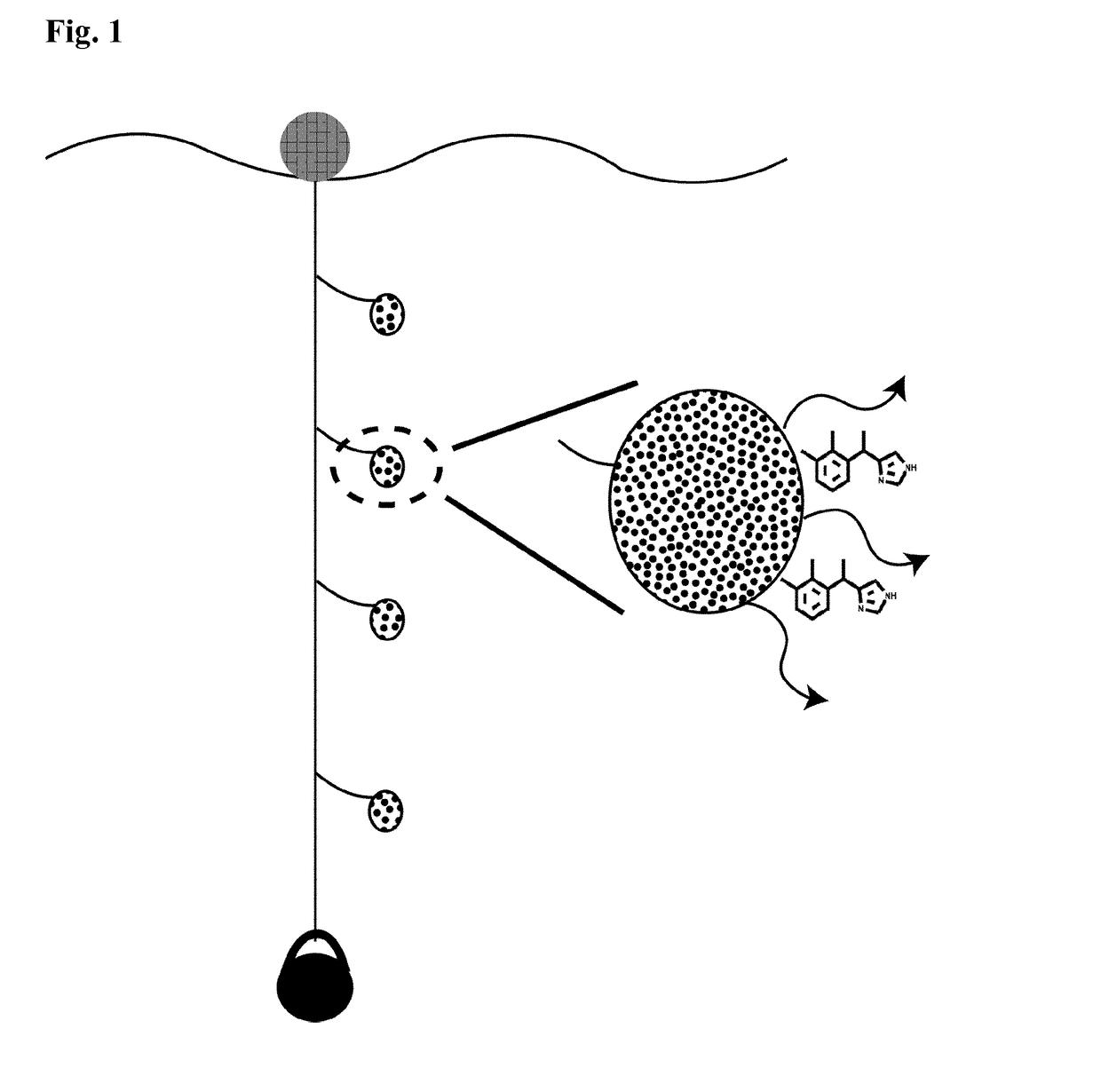Medetomidine for use in controlling parasitic crustaceans on fish
a technology of parasitic crustaceans and medetomidine, which is applied in the direction of antiparasitic agents, biocides, drug compositions, etc., can solve the problems of parasites and related stress factors, fish prone to various types of diseases, financial losses of fish farms, etc., to reduce and prevent marine biofouling, improve the flow of water through cages, and reduce the effect of fish parasitic crustaceans
- Summary
- Abstract
- Description
- Claims
- Application Information
AI Technical Summary
Benefits of technology
Problems solved by technology
Method used
Image
Examples
examples
Salmon Lice Test Protocol
Test Subjects
[0062]Each day fresh animals newly picked from infected salmons were received. The lice were stored in a cooler until used. The lice were categorised as either adults or pre-adults stage II. The adults were both males and females with paired egg strings but most of the collected lice were pre-adults stage II.
Procedure
[0063]The experiments were performed in Petri dishes filled with 20 ml of sea water. In experiments using adult lice, 5-8 lice were added to a dish and with pre adults II, 10-15 lice per dish were used. Each experiment was performed in pair; one dish as a control and the other treated with medetomidine. Before the start of the treatment, both dishes were filmed with a camera for one minute. After the film capture, 200 μL of medetomidine solution (E) was added to the test dish and thereafter incubated in the cooler for two hours. After two hours of incubation, the lice were returned to the lab bench and once more, the activity of the...
PUM
 Login to View More
Login to View More Abstract
Description
Claims
Application Information
 Login to View More
Login to View More - R&D
- Intellectual Property
- Life Sciences
- Materials
- Tech Scout
- Unparalleled Data Quality
- Higher Quality Content
- 60% Fewer Hallucinations
Browse by: Latest US Patents, China's latest patents, Technical Efficacy Thesaurus, Application Domain, Technology Topic, Popular Technical Reports.
© 2025 PatSnap. All rights reserved.Legal|Privacy policy|Modern Slavery Act Transparency Statement|Sitemap|About US| Contact US: help@patsnap.com



